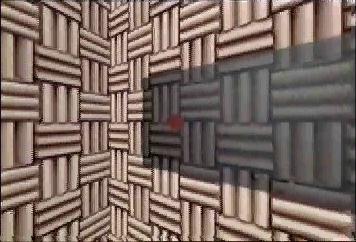 |
Egocentric view. At the beginning, the sound source is hidden by the
wooden board. Until the source arrives at 45 degrees the
simulation uses the occluder mode, after that it switches
into the reflector mode. The filter functions are
exaggerating intensionally the effect of occlusion and reflection
compared to the reference measurements. |
 ; Copyright ©
2023, Jens Herder, All Rights Reserved.
; Copyright ©
2023, Jens Herder, All Rights Reserved.
 ; Copyright ©
2023, Jens Herder, All Rights Reserved.
; Copyright ©
2023, Jens Herder, All Rights Reserved.